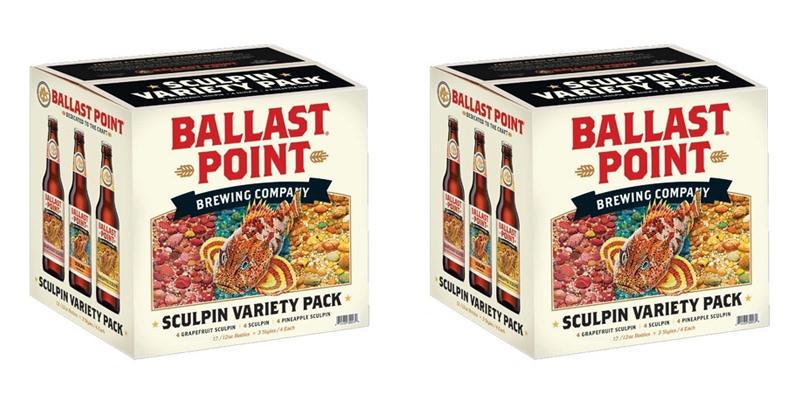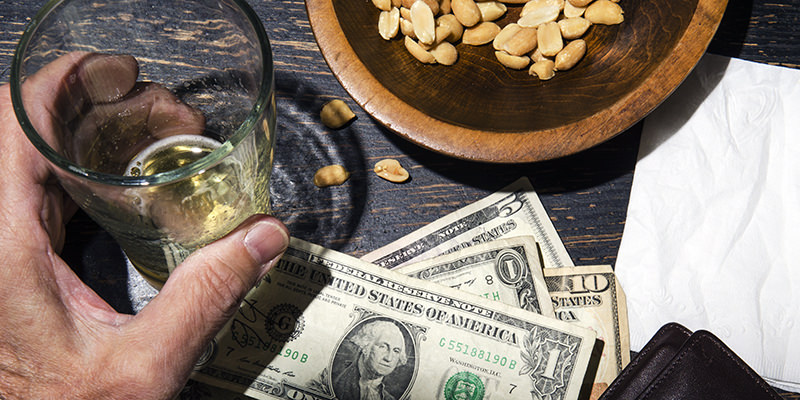Earlier this week Forbes ran a story about average beer prices in 70 cities around the world, as determined by an outfit called GoEuro. According to its methodology, Bratislava, Kiev, and Cape Town are good places to drink beer; Lausanne, Hong Kong, and Singapore are significantly less good places to drink beer. The ranking took into account the price of “local and imported draft beer at hotel bars,” which is a bit vague (which local and imported beers are we talking about?) and also destined to skew high because hotel bars are usually rip-offs. But, while the raw data might be a bit different from your average drinker’s reality, I have no reason to doubt the city-to-city comparisons. I’m not certain the “average” beer in Lausanne is really going to set a smart drinker back $17.60, but I trust that it’s more expensive to drink in Switzerland than in Slovakia.
Beer in New York City certainly isn’t anywhere near as expensive as the reported $9.22 per 33 centiliters (about 11 ounces); I drank in a couple dozen different NYC bars over the Fourth of July weekend, and the worst I saw was $9.25 for a pint of entry-level craft at a place with a fancy outdoor patio by the United Nations. The $9.22 figure would scale up to about $13.75 per pint, and while I’m perfectly willing to believe a feeble, gilded chump can drop that much on a Stella Artois at a horrible midtown steakhouse, it’s nothing near the real-world average price paid by a reasonable human being: The Peculier Pub on Bleecker Street only charges $14 for a 16.9-ounce bottle of Goose Island Bourbon Country Stout. In fact, drinking in New York can be downright cheap if you hunt down happy hour specials and/or dive bars. It’s still not that hard to find a $3 beer in Manhattan, and on Saturday night I stumbled into two consecutive bars in SoHo willing to trade a 16-ounce can of Bell’s Two Hearted for seven measly bucks.
So the good news is beer isn’t necessarily as expensive as Forbes would have you believe, and the better news is that compared with other consumer goods in its class, beer is pretty damn cheap overall. That’s right. In many cases, beer should probably be more expensive. I get annoyed sometimes by the price of one beer relative to another—Ballast Point Sculpin is a dollar per pint more expensive than its peers in Boston, for no discernible reason other than a smart company cashing in on what the market will bear. Cascade sours are all north of $30 a bottle in retail stores here, which is why I’m not qualified to say if they’re worth it, but I have a very strong suspicion that I’m doing just fine when I pay half as much for wild ales from Almanac or even two-thirds as much for Allagash versions—but as a broad category of not-entirely-necessary indulgence, beer is really inexpensive.
Wine pricing is notoriously inscrutable, but it seems safe to say that a decent bottle of grocery store wine costs about the same as a decent six-pack of beer, around $8 or $10, maybe up to $12, depending on your region. But wine prices skyrocket once you get out of the “decent” category, whereas beer very rarely even doubles in price beyond the decency threshold. Since I’m partial to beer, I will err on the side of magnanimity toward the wine world and say that $10 can get you a bottle equivalent in quality to a six-pack of Sierra Nevada Pale Ale. That’s a fair deal either way. But $20 will get you a six-pack (or, more commonly, a 750ml bottle) of some of the very finest beer in the world, whereas a $20 bottle of wine isn’t even guaranteed to be better than a $10 bottle, and it has almost no chance at being world-class. And the beer versus wine pricing disparity is even starker in bars and restaurants: a Boston bar that charges $7 for a pint of Sierra Nevada will get around $12 for a comparable glass of wine.

Of course, grapes and barley are apples and oranges from an agricultural production perspective. I’m not saying good wine’s an objectively bad deal, but it’s simply a hell of a lot more expensive than good beer. And it’s not just wine: craft beer is a fantastic bargain compared to what new “artisanal” liquor makers are charging for their often-shoddy wares. Recognizing that individual tastes vary, it can be safely asserted that a great majority of the beers that cost more than Budweiser are also regarded as superior products by most professional evaluators. That just ain’t true for spirits, particularly with whiskey, where there’s no particular reason to believe that a bottle costing twice as much as Jim Beam will be even half as good. And the stuff that is widely regarded as legitimately excellent tends to be priced accordingly: a new barbecue place down the street from me gets $60 for a shot of Pappy Van Winkle 15-Year, and I’ve recently seen it for $70 elsewhere. There is simply no analogue in the American beer world. If you luck into the right bar in Vermont, you can get a pint of Heady Topper for about one-tenth the price of the aforementioned Pappy 15.
The going rate for widely available craft beer is likely to hold relatively steady due to custom, competition, and predatory pricing from the larger producers. But there’s every reason to believe that prices are going to rise for the special stuff, and why shouldn’t they? The robust beer black market is proof that brewers are leaving money on the table, which isn’t really the American way.
The beauty of beer has traditionally been that a person with a solid working-class income can afford the very best of it, and that’s already started to change at the top of the quality (or hype) scale. That sucks in a way, but for the foreseeable future a bus driver’s still going to be able to afford Sierra Nevada, regardless of where the market for, say, Russian River wild ales eventually settles.
And brewers could justify higher prices for reasons beyond simple, brutal economics 101, too. While it’s true that beer grains are less fickle than grapes, and beer aging is less onerous than waiting for whiskey to mature, beer also has a shorter shelf life than its fellow alcohols, and it should be refrigerated, which isn’t free. Plus, there’s just so much experimentation in beer now. I want ambitious brewers to keep pushing boundaries with regard to barrel-aging and bacteria, which requires tacit agreement that I’ll pay a bit more for the experiments that work to underwrite the ones that get dumped down the drain.
I’m not advocating for beer price gouging by any means because that’s ethically gross and would be ruinous for me personally, but regardless of your thoughts on market-based capitalism, it’s the system we’ve had in place around here for a while now, and spirits and wine prices suggest that we will pay quite a bit to get tastefully toasted. Beer’s not just for chugging anymore, and it’s perfectly reasonable that a bottle of rich, complex, possibly aged and/or high-ABV beer in 2016 would cost as much as a pizza, or a bottle of mediocre wine.

